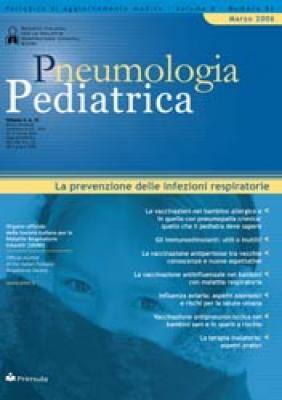Archivio > Vai alle uscite del 2006 > Vai aVolume 6, Numero 21 - Marzo 2006
- La prevenzione delle infezioni respiratorie
Influenza aviaria: aspetti zoonosici e rischi per la salute umana Avian flu: zoonotic features and risks for human health

I volatili acquatici sono il naturale reservoir dei virus dell’influenza aviaria ma l’infezione naturale con tali virus può verificarsi anche nei volatili terrestri e in diverse specie di mammiferi, compreso l’uomo. Il virus influenzale aviario ha svolto un ruolo chiave nelle pandemie influenzali del 1918, del 1957 e del 1968. Queste si sono, infatti, verificate in seguito alla diffusione nella popolazione umana di 3 distinti virus influenzali originatisi dal riassortimento tra virus influenzali aviari ed umani (1957 e 1968) o dall’adattamento di un virus interamente aviario all’ospite umano (1918). Dal 2003 circolano, nel Sud Est Asiatico, virus influenzali del sottotipo H5N1 ad alta patogenicità e oggi tali virus hanno raggiunto livelli endemici nel pollame di molti paesi asiatici e causato un numero crescente di casi di infezione nell’uomo. La situazione orientale ha generato il timore per un’imminente pandemia influenzale ma, ad oggi, il virus influenzale aviario H5N1 non possiede una tra le più importanti caratteristiche necessarie a rendere un virus influenzale potenzialmente pandemico: la capacità di trasmettersi in modo efficiente da uomo a uomo. Nella presente pubblicazione vengono riportate alcune informazioni sulle caratteristiche dei virus influenzali aviari e in particolare sui rischi connessi alla circolazione di tali virus per la salute pubblica.
The natural reservoir of influenza A viruses are aquatic birds, but natural infection with these viruses have been reported in a variety of animal species including humans. The virus strains responsible for the 20th century’s influenza pandemics originated from avian influenza viruses, either through genetic reassortment between human and avian influenza strains (1957 and 1968) or through direct transmission of avian influenza viruses to human (1918). Outbreaks of highly pathogenic H5N1 viruses have been identified among poultry in many Asian countries since 2003. Now H5N1 viruses have reached levels of endemicity among poultry in several South-East Asian countries causing an increasing number of human infections. The Asian developments have raised the level of concern for an imminent influenza pandemic. However, at present there is no evidence of efficient spread of H5N1 virus between humans. This article reviews information about avian influenza viruses and about the risks to human health brought by these viruses.






